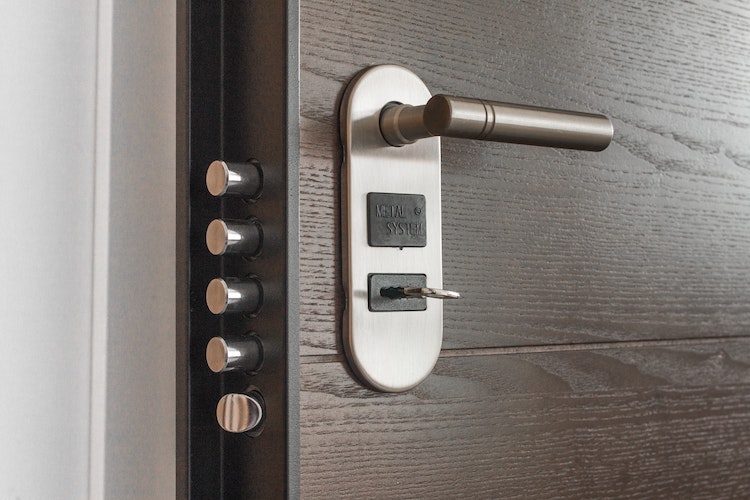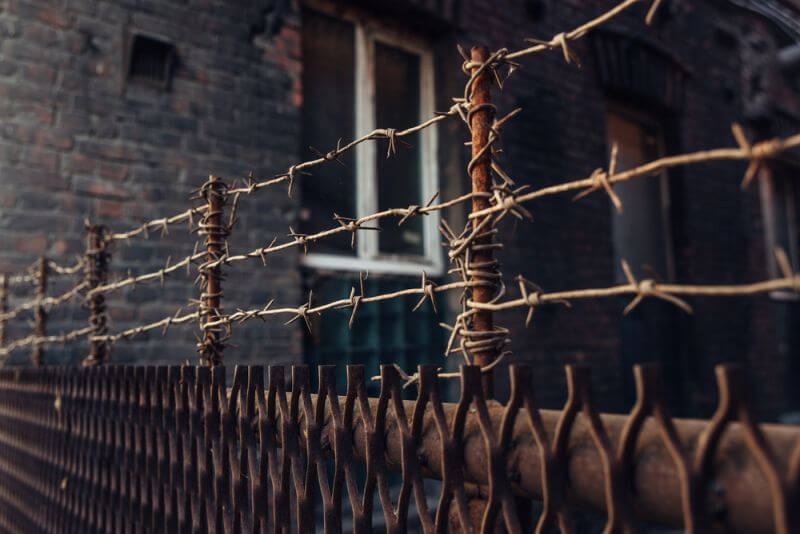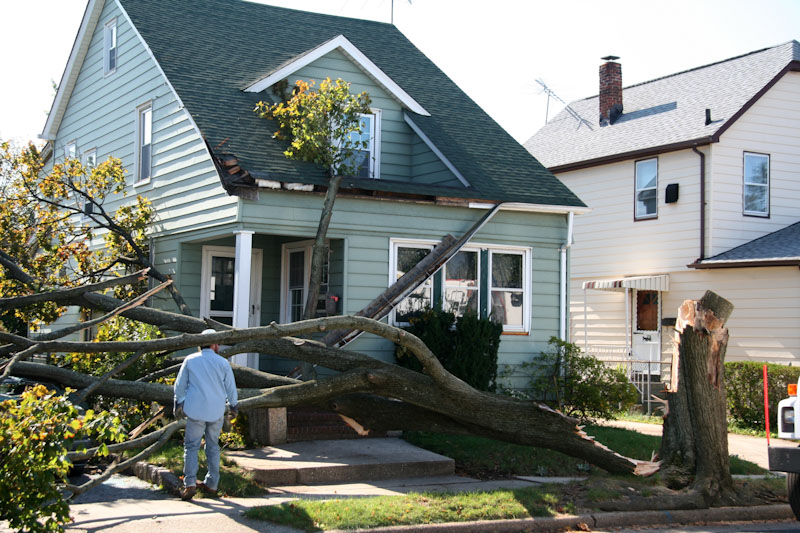Not everyone interested in survivor prepping can live off the grid. Plenty of people want to protect themselves and their families but they still need to live near work, close to schools for their kids, and in proximity to everyday shopping for necessities, such as a grocery store. Needing a home in the city or suburbs doesn’t mean you can’t still protect yourself and prepare for the unexpected.
Even a suburban home in the middle of a populated neighborhood can be turned into a fortress with the right mindset and effort. There are many ways to secure and defend your property, preparing adequately for emergencies all without making your home look like a prison.
1. Use Landscaping for Privacy
Landscaping for energy efficiency also lends more protection to your home. Lots of trees and hedges will give you privacy and shelter your home from the elements, meaning you won’t have to run your HVAC system as often.
To create privacy with your landscaping, use:
- Hedges: Privacy hedges are naturally attractive but also work as a visual and physical barrier. Place them methodically around your property to protect people from prying and seeing into your windows. They can also be used to reduce noise pollution to make your home in the suburbs feel more like an escape.
- Shady trees: The best trees for creating privacy are those that give lots of shade, grow quickly, and are easy to maintain. And just as you would with the hedges, you can arrange them in specific ways to block views of your home and to create more private outdoor areas. Some popular options include European black alders, Dawn redwoods, Chinese tallows, Cottonwoods, and Lombardy poplars.
- Bamboo: While bamboo might not be your first choice, it’s actually an excellent option for creating privacy and protection. Bamboo is very sturdy and strong, making it hard to break through. It’s tall, so it can easily be used to block people from seeing into your home. Most people opt for golden bamboo as it is low maintenance and tall, making it an ideal privacy screen.
- Latticework with vines: Latticework is another attractive and popular landscaping tool as it’s inexpensive and can be used in various configurations to create a privacy screen, especially once you have climbing vines and other plants growing on it.
Fencing is also another way to create privacy around your property. Even though it’s not green, it is still considered a part of your landscaping. A fence coupled with the right trees and other greenery can really create the ultimate natural fortress for your home.
2. Invest in Quality Security and Surveillance Systems
Of course, no home fortress is complete without a top-quality security system. However, security and surveillance systems can get pricey, so add a little at a time if you need to. But if you plan to keep your home in the middle of a suburb in the city, you will need a good system to keep your home protected from intruders and other dangers.
Start with the lighting. Install motion-detecting lights around your home and even scattered around the perimeter of your property. Lights should not just stay on 24/7 as this actually lights up your property and makes it easier for intruders to see. Instead, you want lights that come on only for a couple of minutes when motion is detected to alert you that someone is moving around on your property.
A good alarm system should also accompany your motion-sensing lights to further deter intruders and to make you more aware in case you don’t notice the lights. You can also set alarms and security systems up so that they send personal notifications to you and even alert the local authorities if needed. Try setting them up in specific zones as well, so you can tell where the intruder was trying to enter.
Cameras and video surveillance systems are nice to have, but keep in mind that they really only work if the intruder is easily identifiable, if someone is watching and can quickly respond, and if the electricity is working, which it might not be in emergency situations. Still, it is an added level of security that can help in certain situations.
Having a dog or two (or more) is a simple and effective way to protect and defend your home. Animals are often used for perimeter defense because they can easily hear intruders, and their barking will quickly alert you and potentially scare the intruder off — and they don’t require electricity to work.
3. Opt for Mechanical Controlled Access
Though we live in a digital world that focuses more and more on high-end control systems that run on electricity, this is not the most ideal when you are prepping for survival. When disaster strikes, your home could easily be without electricity for an extended period of time, so it’s better to focus on defending your home using manually controlled access instead of things like digital locks and doors.
All entry points into your home should use high-quality steel or steel-reinforced wood, such as doors and the garage door. You should upgrade all of your locks, opting for ones that are harder to break and pick. Windows, as well, should be high-quality and locked during the day when no one is home and at night when you are sleeping.
4. Install a Safe Room
Safe rooms are great for when a home invasion does occur and you don’t have much time to react and defend yourself or your family. The ideal safe room is in a room or area that you can quickly access, has secure walls and a solid door to protect against firearms, and has some supplies such as a first-aid kit, communication devices, firearms, water, and food supplies.
If possible, your safe room should also have a concealed exit so you can escape out a back way without being detected by the intruders. Just make sure if you add an exit, the intruders themselves can’t find it and easily get in.
It’s also a good idea to have an emergency action plan that you can practice with your family. It’s not always the first instinct to run to a safe room, especially if it is a new addition. Thus, make sure everyone in the home knows how to access it and what to do exactly if a home invasion or other emergency does occur.
5. Build a Prepper Pantry
If you do end up getting stuck hunkering down in your home in an emergency situation, it’s wise to have a prepper pantry built and fully stocked to keep you and your family safe and healthy. This is an important part of protecting your home and your family because the more you have to leave it to get food and supplies, the more vulnerable you are.
The ideal pantry will be in an area of the home that is cool, dry, and out of direct sunlight to keep the food and other supplies safe from damage. You should also keep the pantry in your home protected from rodents and other pests. The last thing you want is to be stuck in an emergency only to find that your supplies have been infested by pests and are unusable.
6. Avoid Displays of Wealth
Another key element in turning your home into a fortress is to avoid making it look enticing to intruders in the first place. In other words, you should avoid overt displays of wealth that will attract burglars and looters.
If your home looks fairly normal and unassuming, it will be less likely to attract those looking to steal expensive items. This is not to say that you can’t have nice things if you want them, but don’t go putting them on display. If you have a nice TV or nice electronics inside, for example, make sure they aren’t visible to people from the outside. And if you have a nice car, make sure it is tucked away in a secure garage.
7. Always Make Your Home Look Occupied
Making your home look as if it is occupied at all times is another important step in deterring intruders from entering your home. That’s not to say that it is 100% foolproof, as some criminals will attempt a break-in even if it looks like someone is home. It’s still wise to have other forms of defense to scare them off. However, making it look like someone is home can help in most situations.
Primarily, this is ideal when you are out of town, whether just for the weekend or for a longer trip or vacation. If your home sits dark with no signs of occupancy for multiple days at a time, you are more likely to have intruders snooping around. So, put your interior lights on timers, pause your mail so it doesn’t pile up, have a neighbor check in now and then, and even have someone house sit for you if possible.
Wrapping Up
Just because you can’t escape living amongst society and go fully off-grid does not mean you can’t still protect yourself, your family, and your home. Creating your ideal suburban home fortress might take time, but it’s certainly achievable if you are willing to put in the effort. The tips above can help, but there are countless other things you can do. Even the smallest effort can help make a difference in emergency situations.











Lewis Elioth | August 26, 2022
|
Yeah, for me, #6 is a no brain ..
radar | September 3, 2022
|
A fortress is a short-term defensive position able to withstand a short-term (days) onslaught with multiple escape routes. THAT IS IT! The whole of human history is the story of fortresses that were demolished either by wars or sieges, or both (that surrounded the fortress and starved them out).
If you cannot plan multiple disguised escape routes in your defensive structures, you had better leave before the combat begins.
READ about Selco Begovic’s year-long siege survival during the Balkan War (e.g., “SHTF Survival Boot Camp”) potentially surviving mainly because they lived on the edges of his town with a park between his house and the community boundary. The whole city was surrounded by the war machine, and infected by a fortressed criminal gangs. He was about 19y/o when it began and soon later wished he would have escaped to surrounding hills before the siege surrounded the very same area. They were bombarded by enemy that surrounded the city, then shot and mugged to death by criminal gangs in the city. The gangs burnt down whole multi-blocks of neighborhoods around the cement factory that they made their headquarters within. The burning of the neighborhoods served the purpose of creating “sniper killing fields” against citizens who ran out of supplies and went to trade for things.
All cement mortars holding bricks together can be burned to dust; and vehicles can be driven through most all homes (even brick ones) (at least eventually).. There are many ways to take down a fortress-Home, but often too few ways to escape the very same.
This fortress article may give hints about how to disguise escape routes, but escape routes are best put into place when building a home from scratch and on a property adjacent to fields and woods, streams-rivers, or on farms, and with (such as) your own septic fields that involves tractors digging to tunnel depths (such as for septic system plumbing, or for geo-earth heating systems that lay water pipes across extensive fields, and hidden basement rooms with tunnels out, etc.).
Yes, for a day or two one might be able to defend a position, but actual combat military NEVER PLAN on holding a position indefinitely when strategy is installed to retreat to safer and re-grouping positions to live another day..
History repeats itself. All fortresses of the past involved in combat were defeated by being burned or by starvation-siege. Many are still buried under the soils. Many a standing castle was depopulated by starvation and associated diseases.
A fortress is in many respects an illusion; but running for one’s life is a reality; and creating subtle ways to escape unnoticed is a mastery so long as you also created storage supplies wherever you are headed.
FlaPrepper1 | September 9, 2022
|
My security cameras are solar powered. They will still work in case of a power outage. They won’t be able to send me notifications but still can save the footage to the onboard MicroSD card. If you want a good, cheap security system, get SimpliSafe. I have it at my house and my Office.